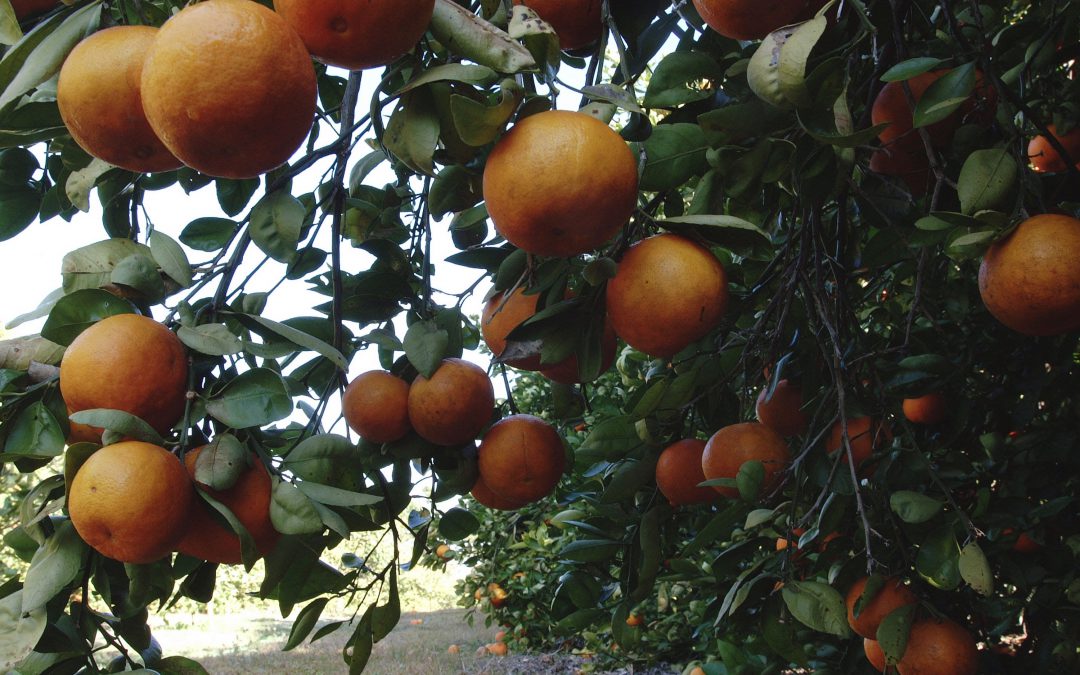
by Mary Salinas | Feb 16, 2016
As you have read in other articles in this blog, it is too early to fertilize your lawn; however, this is a good time to start fertilizing your citrus to ensure a healthy fruit crop later in the year.
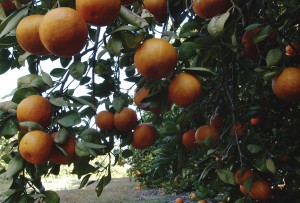
Orange grove at the University of Florida. UF/IFAS photo by Tara Piasio.
Citrus benefits from regular fertilization with a good quality balanced citrus fertilizer that also contains micronutrients. A balanced fertilizer has equal amounts of nitrogen, phosphorus and potassium such as a 6-6-6, 8-8-8 or a 10-10-10. The amount of fertilizer to be applied will vary on the formulation; for example you will need less of a 10-10-10 than a 6-6-6 as the product is more concentrated. Always consult the product label for the correct amount to use for your particular trees. Fertilizer spikes are not recommended as the nutrients are concentrated in small areas and not able to be widely available to all plant roots.
The number of fertilizations per year will vary depending on the age of the tree. Trees planted the first year need 6 light fertilizations that year starting in February with the last application in October. In following years, decrease the number of fertilizations by one per year until the fifth year when it is down to 3 fertilizations per year. From then on, keep fertilizing 3 times per year for the life of the tree. Good quality citrus fertilizer will have accurate and specific instructions on the label for the amount and timing of fertilizer application.
Fertilizer should be spread evenly under the tree but not in contact with the trunk of the tree. Ideally, the area under the drip line of the tree should be free of grass, weeds and mulch in order for rain, irrigation and fertilizer to reach the roots of the tree and provide air movement around the base of the trunk.
If you have not in recent years, obtain a soil test from your local extension office. This can detect nutrient deficiencies, which may be corrected with additional targeted nutrient applications.
For more information:
Citrus Culture in the Landscape
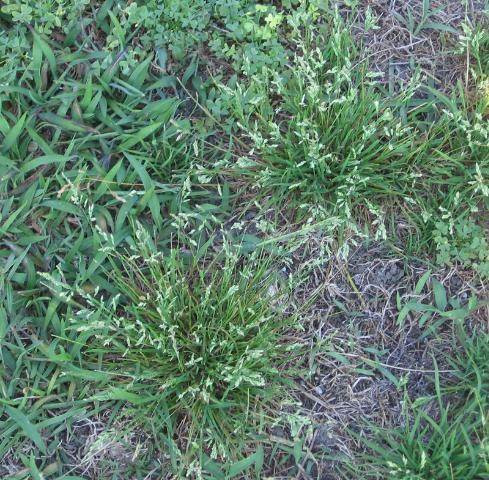
by Les Harrison | Feb 10, 2016
Weeds grow everywhere, especially in manicured lawns and landscapes despite the best efforts of owners who have spared no expense to remove the offending flora.
The reality, at least about the herbicides, is different from perceived appearances. Herbicides can be a wonderful tool for the homeowner, if applied properly.
The first point to remember about herbicides is to always, Always, ALWAYS apply them as instructed by the label directions. The oft quoted mantra of “the label is the law” is accurate.
Herbicides and their labeling are periodically reviewed and assessed to confirm effectiveness against target weeds without damaging the environment. Not following the label directions can have many negative implications for both the environment and the applicator.
Herbicides are either selective or non-selective when killing plants. Non-selective herbicides kill or damage every plant, but selective herbicides target a narrower range of plants.

Annual Bluegrass – Image Credit Larry Williams
Never apply herbicides when there is a breeze or wind. Herbicide drift can injure or destroy plants that are not the intended target.
High temperatures can contribute to the drift problem by volatizing some of the herbicide spray. Even the lightest air movement will cause drift off the target weeds when this condition exists. Herbicide drift can also be deposited in ponds and streams, harming the aquatic creatures that live there. Some herbicides are toxic to fish, insects and other animals that can be killed by tiny amounts of the active chemical. Additionally, the off target herbicides can kill aquatic plants. When the dead plants decay, they deplete the water of oxygen, again threatening or ending the life of the water’s residents.
Rain or dew resulting from high humidity can negate a herbicide’s application. If a leaf is wet, most or all the herbicide will run off on to the soil where it can leach into the water table.
Regular herbicides work only when the plant is actively growing. Pre-emergent suppresses the growth of the weed seedling above the soil level.
Many weeds have already produced seeds for next spring. Herbicides applied now will not affect the germination of that seed months from now.
The most effective strategy is to mow weeds before they set seed or to collect and destroy those which have already produced seed. Even with 100 percent success at eliminating this year’s weed seed crop, there will be weeds next year.
Some weed seed remain in the soil, sometimes for decades, only to germinate when conditions are perfect for their sprouting. Sickle pod and crotalaria are local examples of long term seed vigor.
Other seed can blow in or be dropped by wild or domestic animals passing through the property. A pre-emergent herbicide which stops germination can help control these latent invaders.
For more information:
Weed Management Guide for Florida Lawns
Chemical Weed Management

by Larry Williams | Feb 10, 2016
It

Image courtesy UF / IFAS Florida Friendly Landscaping
It’s too early to fertilize our warm-season lawn grasses now. This includes the use of fertilizers contained in weed-and-feed products.
There are a number of reasons why it’s best to wait to fertilize your lawn.
First, the soil temperature is too cool for grass roots to have access to some of the fertilizer elements. For example, iron and potassium are poorly available until the soil warms up in spring. Some nutrients leach below the grass roots because the lawn can’t use them yet. This results in waste of fertilizer, time and money.
Secondly, fertilizing too soon can induce nutrient deficiencies and off color areas in your lawn. This is one cause for bright yellow areas in lawns during early spring. Nitrogen is readily taken up by the lawn, even under cool soil conditions, and stimulates early green growth. Early lawn growth is dependent on iron also being readily available. However, iron is poorly available under the cool soil conditions of late winter and early spring. Therefore lawns turn yellow in areas due to an iron deficiency caused by an early fertilizer application. Many times, as soil temperatures warm during mid April and May, the iron becomes available and the lawn turns green. So why not avoid this scenario by waiting until mid April to fertilize your lawn?
It takes consistently warm night temperatures to allow the soil to become warm enough for best root growth and optimal uptake of fertilizer.
Thirdly, the young, tender grass roots that are beginning to grow in early spring are easily burned by the fertilizer.
Fourthly, fertilizing too early can stimulate early lawn growth, which is tender and easily injured by a late frost. The average date for our last killing frost is mid March.
Also, be very cautious about using weed-and-feed products that recommend a late winter application. These products are usually high in nitrogen, which will cause your lawn to begin growing too early. If you’re trying to control weeds, it’s best to apply your herbicides separately from fertilizer, anyway.
In North Florida, it’s best to wait until your lawn has completely greened up in spring before applying any fertilizer.
Waiting allows for more efficient use of the fertilizer. You will not injury you lawn by waiting to fertilize but you can certainly injure your lawn by fertilizing too early.
So, have patience, allow your lawn to green up on its own and then fertilize, even if it’s not until mid April or May.
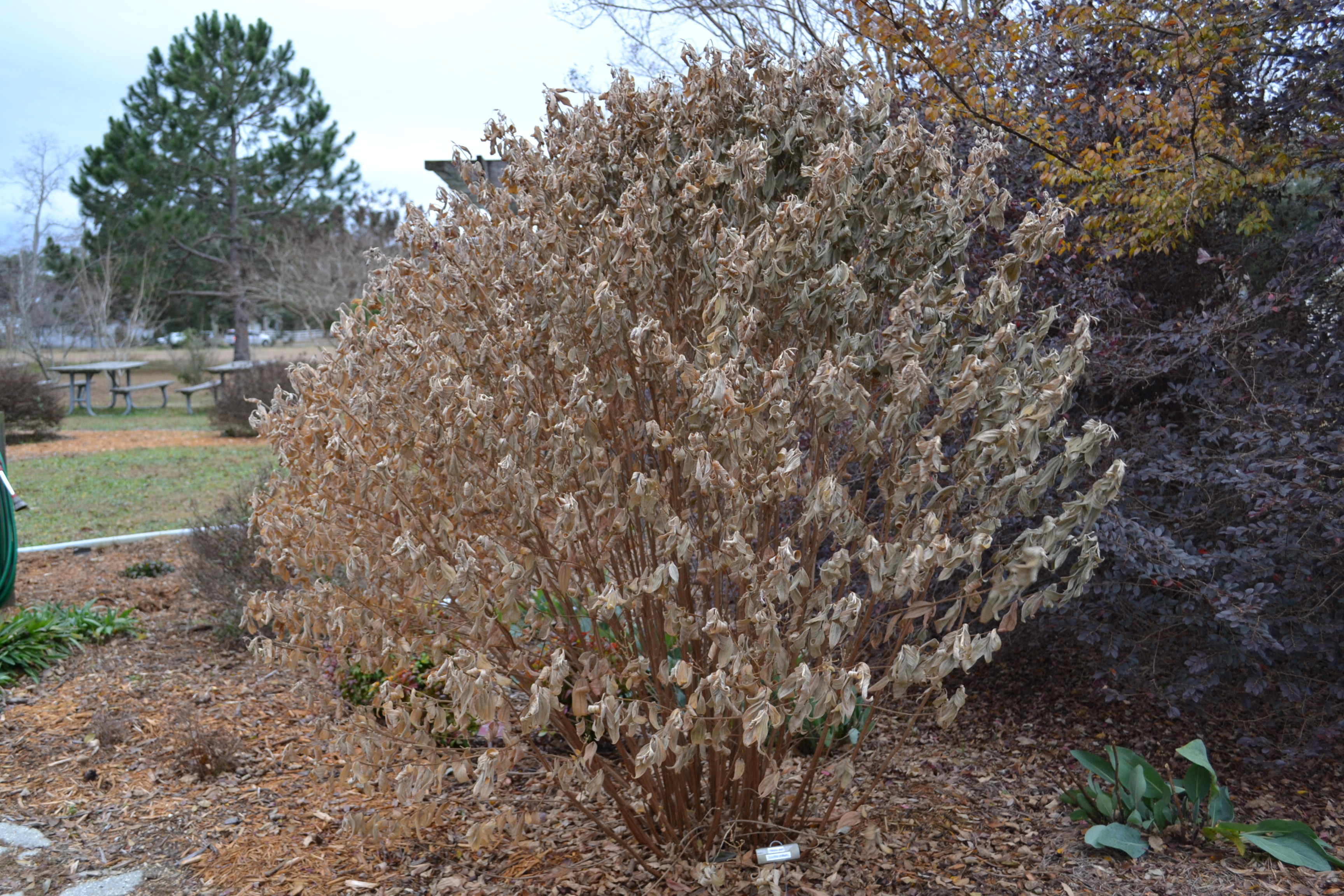
by Matthew Orwat | Feb 10, 2016
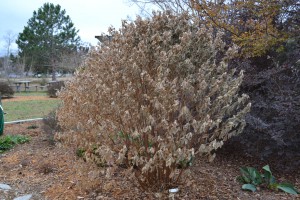
Image Credit: Beth Bolles
Although it is quite cold outside right now, spring is just around the corner. Many of us have perennials we enjoyed all summer and fall, and have been faced with their ugly dead stalks all winter. Perennials that are meant to die to the ground each winter look ugly and decayed after the first frost. For many perennials, the stalks have been left up and allowed to slowly die, allowing nutrients to be slowly translocated to the root system.
Many perennials, such as hibiscus species, hydrangea, salvia species, firebush (Hamelia patens), rudbeckia, echinacea, lantana and others still have a large amount of starch stored in their branches, even after the first frost. Although it was very tempting to remove these unattractive reminders of the beautiful spring gardening season, hopefully you waited to allow the starch to translocate (move) down to the root system.
Now through early March is the time to remove those unsightly dead branches to living tissue. To determine if there is “life” left in those burned and singed stems, just scratch off the top layer of the stem. If any nutrients remain in the stem, it will be green or yellow where the scratch was made. Another good way to determine if it is a good time to cut perennials back, since coastal and inland locales differ climactically, is to observe the beginning of new growth and trim at that time. If it is brown it’s dead, cut it back!
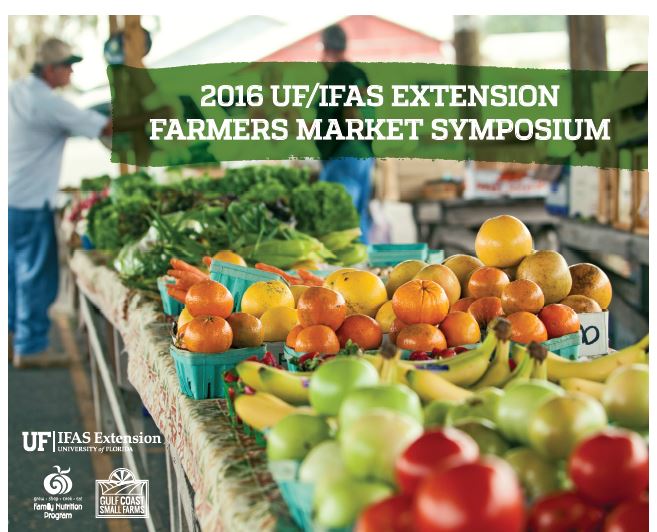
by Beth Bolles | Feb 10, 2016
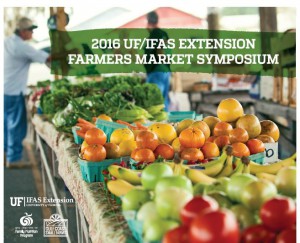 On Tuesday, March 8, 2016, UF/IFAS Extension Escambia County will hold a Farmers Market Symposium from 8:30-3:30. The meeting will take place at the Langley Bell 4-H Auditorium, 3730 Stefani Road Cantonment FL 32533.
On Tuesday, March 8, 2016, UF/IFAS Extension Escambia County will hold a Farmers Market Symposium from 8:30-3:30. The meeting will take place at the Langley Bell 4-H Auditorium, 3730 Stefani Road Cantonment FL 32533.
EDUCATIONAL SESSIONS INCLUDE:
• Overview of Florida Farmers Markets
• Starting a Community Garden
• Best Practices at Farmers Markets
• Food Safety Guidelines for Growers and Vendors
• Multiple Payment Options for Farmers Markets
• Cottage Food Laws
• Marketing Opportunities
• Food Safety at the Farmers Market
• Additional Optional Session: Farmers Market Nutrition Program Training for any interested vendors
Lunch and refreshments will be provided. The cost is $15 for pre-registration, $20 at the door. REGISTER ONLINE at http://tinyurl.com/IFAS-Farmers-Market-Symposium
For more information, contact Christina Walmer at cbwalmer@ufl.edu or by phone at 850.475.5230








